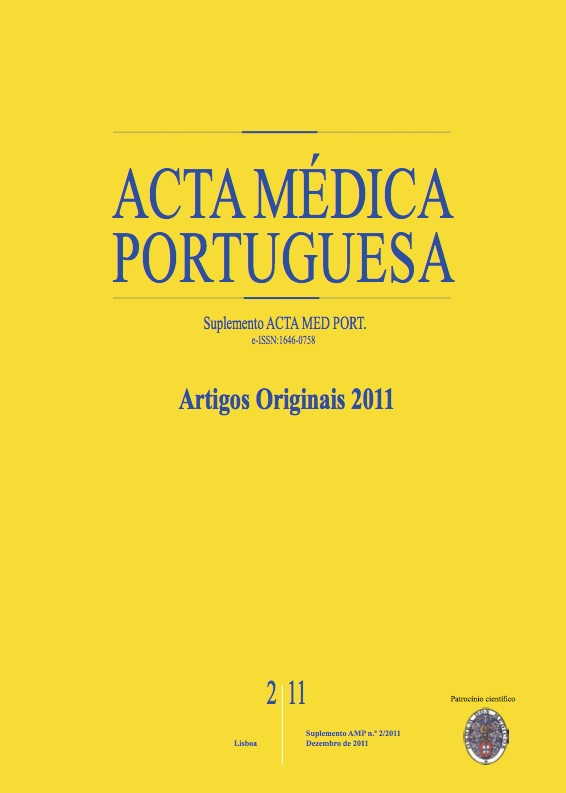Extended-spectrum β-lactamase producing bacilli in a paediatric hospital.
DOI:
https://doi.org/10.20344/amp.1509Abstract
Enterobacteriaceae are a common cause of invasive disease in children. The production of extended-spectrum ß-lactamase (ESBL) by these bacteria and consequent resistance to several antibiotics has increased. The paediatric data are scarce.To identify children infected with ESBL-producing bacilli, determining their prevalence in health care related infection and community-acquired disease. To analyse demographic, clinical, laboratory, therapeutic and follow-up data. To identify potential risk factors for infection by ESBL-producing organisms.A case-control study, conducted in a level III paediatric hospital, from July 2007 to December 2009. All patients were identified from the microbiology database. Children infected by ESBL-producing bacilli were compared with a group with infection by non-ESBL producers, selected in a systematic way, given the bacteria, product and date of isolation. Statistical data analysis was performed using SPSS® 17.1.The ESBL-producing phenotype was detected in 0.5% of Escherichia coli and 16.4% of Klebsiella spp identified. These bacteria were isolated in 23 children: 7 Escherichia coli (30.4%), 15 Klebsiella pneumoniae (65.2%) and 1 Klebsiella oxytoca (4.3%). The most common diagnosis was urinary tract infection (39%). Hospital admission was required in 70% of the cases versus 50% controls (p=0.141), with mean duration stay of 69 days for cases and 36 days for controls (p=0.235). The mean time between admission and infection was 32 days in both (p=0.978). Health care related infections were identified in 70% of cases versus 25% of controls (p=0.001). Infections due to ESBL producing organisms occurred in the community setting particularly in the last year of the study (n=4). The presence of chronic disease (p=0.022) and previous hospitalization (p=0.025), antibiotic use (p=0.008) and invasive ventilation (p=0.002) were more common in infection caused by ESBL-producing bacteria. Surgery (p=0.175) and the presence of a central venous catheter (p=0.189) were not risk factors. In a multivariate analysis, only prior invasive ventilation was an independent risk factor for infection by ESBL-producing bacteria (p=0.002, OR=7).The ESBL-producing phenotype was detected in 0.5% Escherichia coli and 16.4% Klebsiella spp identified; mainly in health care related infections. The presence of chronic disease and previous hospitalization, invasive ventilation and antibiotic intake were more common in infections caused by these bacteria. Prior invasive ventilation was an independent risk factor.Downloads
Downloads
How to Cite
Issue
Section
License
All the articles published in the AMP are open access and comply with the requirements of funding agencies or academic institutions. The AMP is governed by the terms of the Creative Commons ‘Attribution – Non-Commercial Use - (CC-BY-NC)’ license, regarding the use by third parties.
It is the author’s responsibility to obtain approval for the reproduction of figures, tables, etc. from other publications.
Upon acceptance of an article for publication, the authors will be asked to complete the ICMJE “Copyright Liability and Copyright Sharing Statement “(http://www.actamedicaportuguesa.com/info/AMP-NormasPublicacao.pdf) and the “Declaration of Potential Conflicts of Interest” (http:// www.icmje.org/conflicts-of-interest). An e-mail will be sent to the corresponding author to acknowledge receipt of the manuscript.
After publication, the authors are authorised to make their articles available in repositories of their institutions of origin, as long as they always mention where they were published and according to the Creative Commons license.









